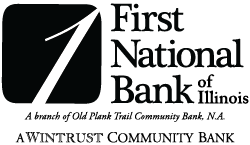Is Your Bank Changing Hands? A True Local Bank Puts Customers First
Wondering if you should stick with your bank throughout its transition? Here are some signs to be wary of.
Is Your Bank Changing Hands? A True Local Bank Puts Customers First
Wondering if you should stick with your bank throughout its transition? Here are some signs to be wary of.
Our brains train us to seek out consistency in our lives, a default setting especially relevant when it comes to our banking experiences. After spending years with a bank cultivating meaningful relationships and becoming accustomed to the products, policies, and processes, it’s bound to be disorienting when there’s any disruption to the status quo. In this context, there’s perhaps no bigger disruption than your bank merging or being acquired.
Oftentimes, you can anticipate unwanted changes to your overall experience following a bank merger or acquisition. If you’re on the fence about staying with your bank through its transition, be on the lookout for these five red flags that can indicate a downturn in the quality of your banking experience.
Red Flag No. 1: Lack of proactive communication
Even when your banking experience is business as usual, it’s important that your bank communicates with you in a transparent and proactive manner. That said, this kind of candid communication is especially crucial during times of great change and uncertainty, such as a merger or acquisition.
“During transitions, the first red flag that comes to mind is a lack of proactive customer communication,” said Briana Hansen, SVP and Head of Retail Banking at Hinsdale Bank & Trust. “Customers deserve to know what’s happening and when, long before it impacts them. When a bank is quiet on the communication front, it’s an indication that their priorities are elsewhere when they should be with their customers.”
With all the sensitive details surrounding bank mergers and acquisitions, it’s certainly a cause for concern if the banks involved leave you in the dark. Considering the important dates and notices you’ll need to be aware of to ensure a successful transition, a lack of proactive communication can set you off on the wrong foot.
Red Flag No. 2: Closures, consolidations, and other changes
For many customers, the most frustrating part of their bank being bought is the magnitude of the changes to come.
It’s entirely possible that some of your bank’s product lines could be altered or eliminated — including ones that you rely on every day, such as a checking or savings account unique to your bank or high-touch services like coin counting. Other possibilities to consider are branch closures or ATM network eliminations, both of which can make it harder to bank in-person, and thus, harder to form connections and get help from real bankers.
If the changes that come with your bank’s merger or acquisition make your previous banking experience unrecognizable, that’s a major red flag that should prompt you to reconsider your relationship with your bank.
Red Flag No. 3: Loss of local presence
In tandem with branch and ATM network closures, it’s alarming when your once community-focused bank begins to lose its local presence.
Whether that means your bank is hosting and sponsoring fewer neighborhood events, or cutting back on supporting local businesses and causes, it’s never a good sign when your bank is reeling in its investment in the community. These types of contributions are the backbone of community banking, and if your bank doesn’t have a genuine commitment to your community, you’re that much more likely to be treated as just another account number.
Your bank straying away from your community can be especially detrimental if you’re a local business owner, as a loss of local presence also suggests a diminished expertise in the local business landscape — and consequently unavailable for your unique needs and goals as a business owner. Chances are that you can also expect less dedicated support than before, negatively impacting not only you, but also your customers and colleagues.
Red Flag No. 4: Faltering customer service
No matter your banking needs, high-quality, personalized customer service is the driving force behind a successful, fulfilling banking experience. So, when your bank’s customer service is starting to become less dependable and hands-on than it used to be, it’s safe to assume that the quality of your overall banking experience is headed downhill.
Longer wait times, generic responses, and less expertise and enthusiasm are all signs of customer service in decline. It may not seem too serious at first, but sooner or later, there will be a time when you won’t be able to receive the help you need in a timely manner, leaving you feeling insignificant in the eyes of your bank.
Don’t ignore the red flag if you feel that your bank’s customer service has soured. Ultimately, customer service should be there to make your life easier — not harder. Once your bank’s customer service becomes a stressor, there isn’t much to be gained from sticking around.
Red Flag No. 5: Disconnect between communications and reality
While it’s a red flag if your bank fails to communicate with you proactively, it’s arguably even more worrisome if your bank does communicate with you about the transition but fails to follow through on its statements.
Trust is one of the most vital elements of a successful banking relationship. If you can’t trust your bank to be honest and reliable, it’ll be difficult to have any peace of mind.
A banking experience without peace of mind is one that should be avoided at all costs. Through all of life’s twists and turns, you deserve a bank that has your back.
Don’t settle for subpar banking
At Wintrust, we pride ourselves on going above and beyond for every single customer, every single day. As a true community bank, we believe that your success is our success, too. With over 170 locations across Chicagoland, southern Wisconsin, and northwest Indiana, each branch is dedicated and tailored to the unique area it serves — for the long haul.
Combining the resources of a large bank with the personal touch of a small bank, we offer the best of both worlds. No matter your banking needs, our friendly, knowledgeable bankers are here to support you every step of the way.
Explore our locally-based suite of products and services for personal and business banking here.





